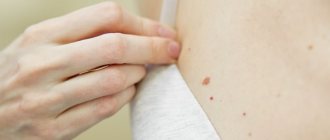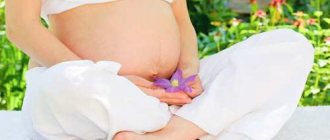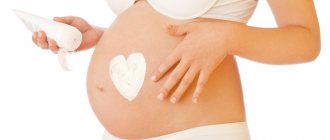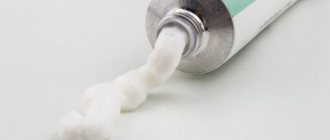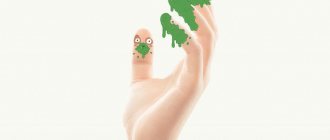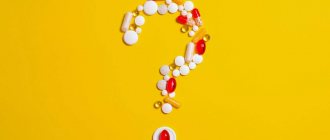How does the procedure work?
After thoroughly cleansing the skin of cosmetics and impurities, the doctor begins to gradually, in small doses, introduce the biorevitalizant under the skin.
These are real microinjections. They don't cause pain. At the request of the patient, a local anesthetic is applied to the skin before the procedure. At the injection sites, papules appear - temporary bumps that disappear in a couple of hours or a couple of days - depending on the drug and the individual characteristics of the patient’s body. At the end of the procedure, the skin is treated - an antiseptic is used for this. The patient receives recommendations and leaves the clinic. A normal consequence of the session is swelling and redness of the skin. Small bruises may appear at the puncture sites.
How does hyaluronic acid work?
Hyaluronic acid is the main component of human body tissue, which is responsible for retaining water in the intercellular space. With age, the level of this substance and collagen in the body decreases, which leads to dehydration of the skin and mucous membranes.
Injections of hyaluronic acid preparations allow:
- resume your own collagenogenesis and angiogenesis (formation of new blood capillaries),
- provide water reserve and oxygen exchange in the cellular matrix of the skin,
- regulate biobalance and cellular metabolism, increasing the reconstructive potential in tissues.
Biorevitalization during pregnancy
It is not known how the body of a pregnant woman will react to a particular substance obtained by third parties. This is the main reason for the ban on all injection cosmetology services for pregnant women. Yes, biorevitalization is really not carried out during pregnancy. And below we will describe by trimester why it is better to refrain from beauty injections while carrying a baby.
First trimester
The fetus is just attaching to the wall of the uterus, this is a very important period! Any stress, including that associated with injection effects on the body, can lead to pregnancy loss. Ask any gynecologist - and each of them will actively prohibit HA injections in the early stages.
Second trimester
This period is calmer, but injection cosmetology is still not indicated. Even micro-injections can still provoke the development of inflammation, which will be very inappropriate for the expectant mother, whose body is already working at full capacity - as they say, on the fly. In addition, after biorevitalization, a pregnant woman may experience long-lasting swelling and sudden allergies. Stress from injections sometimes provokes surges in blood pressure, which is also, to put it mildly, not beneficial for the expectant mother.
Third trimester
At this time, procedures can be carried out, but very carefully. Most doctors still do not recommend visiting a cosmetologist in the third trimester. The explanation is very simple: stress can cause premature birth. Therefore, it is better for the expectant mother to take care of herself.
Is it possible to enlarge lips during pregnancy?
Many girls got used to constant filler injections before pregnancy, and decide to inject them again during pregnancy. Fillers act locally and should not pass into breast milk or cross the placental barrier, but due to the lack of confirmed scientific data on the safety of such a procedure, it is not recommended.
- Due to hormonal fluctuations and swelling, lips can change shape during pregnancy. As a result, after childbirth, when appearance returns to normal, they will look unaesthetic. Asymmetry may even appear.
- An altered metabolism can lead to the fact that the fillers will dissolve in a month or two, and the procedure will simply be useless.
Therefore, lip augmentation during this period is not worth it due to medical contraindications and the unpredictability of the result.
Contraindications
Pregnancy is an absolute contraindication to hyaluronic acid injections. You cannot do biorevitalization during the period of breastfeeding. Moreover, most experts advise returning to injection cosmetology not immediately after the end of lactation, but 2-3 months after you stop breastfeeding.
Other contraindications:
- inflammatory processes in the body;
- skin damage;
- acne in the acute stage;
- skin diseases;
- herpes;
- colds;
- increased body temperature;
- endocrine pathologies;
- blood clotting disorder;
- taking anticoagulants;
- individual intolerance to the components of the drug (hyaluronate is a natural substance, but allergies can occur to other components or simply due to individual characteristics);
- oncology (specialist consultation is required);
- diabetes;
- diseases of the heart and blood vessels;
- autoimmune pathologies;
- age under 18 years (usually biorevitalization is not performed on patients under 25 years of age);
- days of menstruation.
For pregnant patients, we can recommend safe care products (emulsion for washing, balancing lotion, etc.). Pregnant women can also undergo ultrasound cleaning (with the permission of the gynecologist). As for other cosmetic services, it is better to wait out the pregnancy period. After all, the baby’s health is undoubtedly an absolute value!
Cosmetic procedures during pregnancy and breastfeeding
18.07.2019
Pregnancy and breastfeeding are a time when we care more about the health of our child than about our own beauty. However, you still want to preserve youth and beauty, so many questions arise: which procedures are safe at this time, which should be categorically abandoned, why, and many others. We asked the cosmetologist-dermatologist of “Our Clinic” to clarify the situation!
- When can I start performing professional cosmetic procedures after childbirth?
Immediately after finishing breastfeeding.
- How long does it take for injectable drugs, such as botulinum toxins, to be eliminated from the body?
Botulinum toxins are eliminated within 2 days. Knowing this, some women use a trick - before going to a cosmetologist, they express milk for a given period of time, after which they calmly carry out the procedure. We do not recommend doing this, because... Most procedures have not been studied to ensure their safety for pregnant and breastfeeding women.
- Why can't most procedures be performed during pregnancy and breastfeeding?
To obtain permission to perform procedures on pregnant and lactating women, the drug must be tested on them. Therefore, most drugs do not have confirmed data on the safety of their use for pregnant and lactating women. Painful sensations during injections can provoke uterine tone, and in nursing mothers - cessation of lactation. Some drugs are absorbed into the blood and, once in the milk, are passed on to the baby, or pass through the placenta into the fetal bloodstream. Cosmetologists at Svoe Clinic work only with certified drugs and strictly follow all recommendations, taking into account indications and contraindications for procedures.
- How does professional cosmetics differ from mass market ones? Does it matter what cosmetics to use during pregnancy, lactation and after breastfeeding?
Professional cosmetics undergo more research, are often more concentrated, and contain fewer preservatives and fragrances. Accordingly, such cosmetics are much less likely to cause allergies and irritations. Pregnant and breastfeeding women have more sensitive skin. Due to hormonal imbalance in the body at this time, women are more susceptible to products applied to the skin, the skin is more susceptible to ultraviolet radiation, which means there is a high probability of getting pigmentation. To avoid this, we recommend cosmetics for sensitive skin and creams with SPF protection. You can choose the cosmetics that suit you during a consultation.
- Most pregnant women are now over 30 years old. How to maintain skin health during such a long period of time (pregnancy - breastfeeding)? What procedures should I start with after finishing breastfeeding?
In fact, pregnant and lactating women can and are even recommended to undergo care and support procedures: light chemical, enzyme, enzyme peels, facial massages, masks, facial cleansing.
- Why do stretch marks appear? What can be done to prevent stretch marks? How to get rid of stretch marks?
Indeed, quite often women after pregnancy and birth of a child are bothered by stretch marks. As a rule, this is due to the fact that the woman had a lack of protein in her diet. As we know, if there is insufficient protein, collagen, which gives elasticity to the skin, suffers. The second reason for the appearance of stretch marks may be insufficient nutrition and hydration of the skin.
To prevent stretch marks, the skin should be lubricated with nourishing creams 2 times a day. For the best effect, we recommend alternating creams with oils or body milk. It is necessary to lubricate all those places that are susceptible to stretch marks, and these are: stomach, hips, chest, sides. It is advisable to begin these procedures before the belly begins to grow.
If stretch marks have already appeared, you need to resort to procedures that can be performed at home, these are: massages, massages with a brush or a hard washcloth, followed by the application of rich nourishing creams. Professional cosmetic procedures can be done only after breastfeeding is completed. Laser resurfacing will help fight stretch marks. They are performed only in the autumn-winter period at intervals of once every 1-1.5 months with a mandatory recommendation not to sunbathe in the active sun for at least 2 months. For the best resurfacing effect, it is recommended to alternate with collagen injections, for example the drug “Collost”, or injections of hyaluronic acid, vitamins and silicon. This will stimulate the production of new collagen and stretch marks will become less noticeable. The listed procedures potentiate each other’s action and the effect becomes more pronounced.
If the skin is atonic, flabby, overstretched, and the volume of the abdomen does not go away after childbirth, then it makes sense to seek the help of a plastic surgeon and perform a mini- or full abdominoplasty to significantly improve the appearance of this area.
- Does it matter when to start dealing with stretch marks?
Stretch marks respond best to treatment when they are pinkish-blue in color. These are “fresh” stretch marks. As a rule, they look like this up to a maximum of 2 years. Then they turn white, which means the tissue becomes scar, and it is already difficult to fight it. The sooner you start fighting stretch marks, the better the effect of the procedures will be.
If you have any questions or would like to choose skincare products for your skin, call 8 (812) 407-33-66.
14
3
Biorevitalization procedures
Before vaginal rejuvenation sessions, you need to be examined and undergo laboratory tests to identify contraindications.
The day before the procedure, you should stop taking alcoholic beverages, drugs that affect blood clotting, and smoking.
The procedure is carried out in an examination room on a gynecological chair. In general, the procedure is painless, but if the patient wishes, an anesthetic gel can be applied to the treatment area.
The drug is injected with the thinnest needles into the submucosal layer of vaginal tissue. The procedure may include either separate biorevitalization of the vagina and vulva, or their simultaneous treatment.
The duration of one procedure is from 20 to 30 minutes. No rehabilitation period is required. After biorevitalization of the genital organs, swelling and slight discomfort may be observed for several days.
After treatment, it is recommended to abstain from baths, saunas or hot baths, as well as sexual intercourse for at least 5-7 days. This will allow the injected filler to be evenly distributed and avoid accidental infection due to friction.
The duration of the effect of the procedure varies and generally lasts up to 6-12 months, after which the course can be repeated again.
Causes of dry skin during pregnancy
- Increased fluid requirement (up to 2 liters per day), i.e. just dehydration. Many people avoid drinking enough water for fear of swelling.
- Reduced activity of the sebaceous glands. Occurs due to increased activity of the hormone estrogen. And if the expectant mother’s skin was not initially prone to oiliness, then during pregnancy there is a high probability of dry skin.
- Development of hypothyroidism and mild forms of diabetes mellitus in pregnant women .
